
How to Use AMS1117-3.3V Module: Examples, Pinouts, and Specs
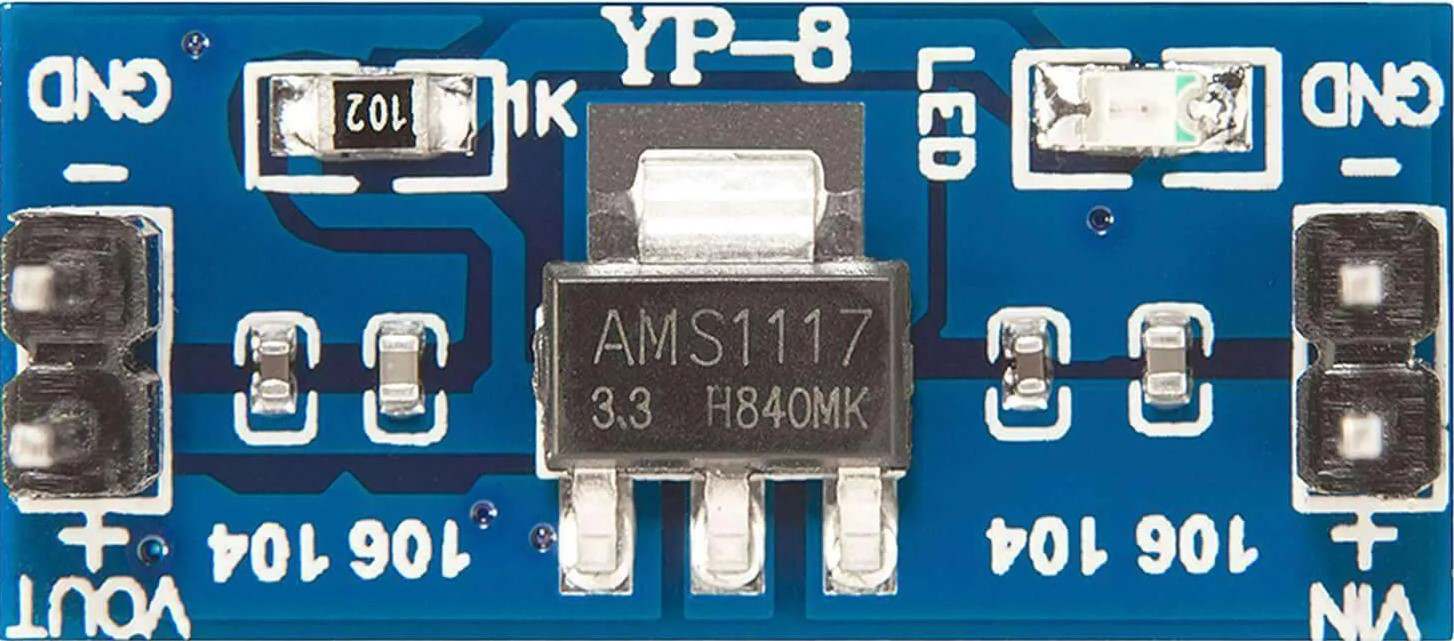
 Design with AMS1117-3.3V Module in Cirkit Designer
Design with AMS1117-3.3V Module in Cirkit DesignerIntroduction
The AMS1117-3.3V module is a voltage regulator designed to provide a stable 3.3V output from a higher input voltage, typically ranging from 4.5V to 12V. It is widely used in power supply circuits for microcontrollers, sensors, and other electronic devices that require a reliable 3.3V power source. The module is compact, easy to use, and features built-in thermal and short-circuit protection, making it a popular choice for hobbyists and professionals alike.
Explore Projects Built with AMS1117-3.3V Module
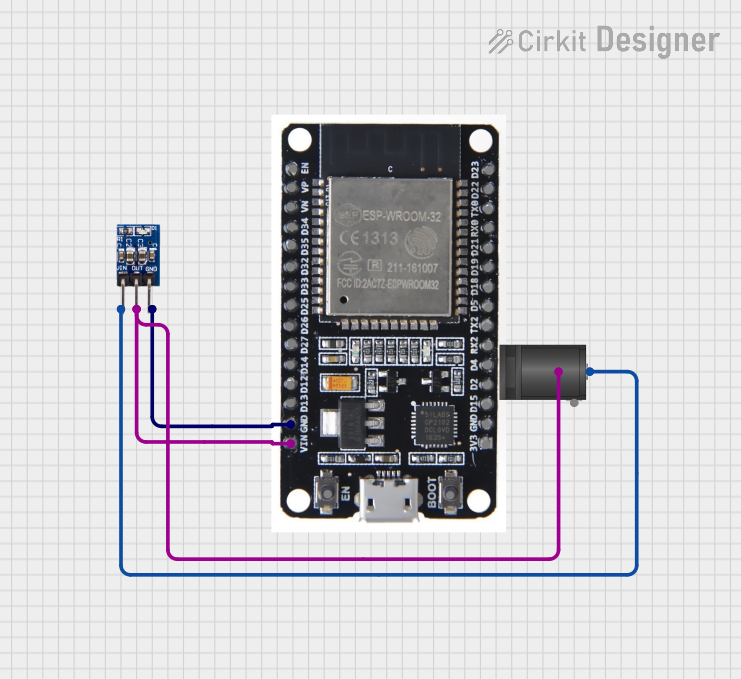
 Open Project in Cirkit Designer
Open Project in Cirkit Designer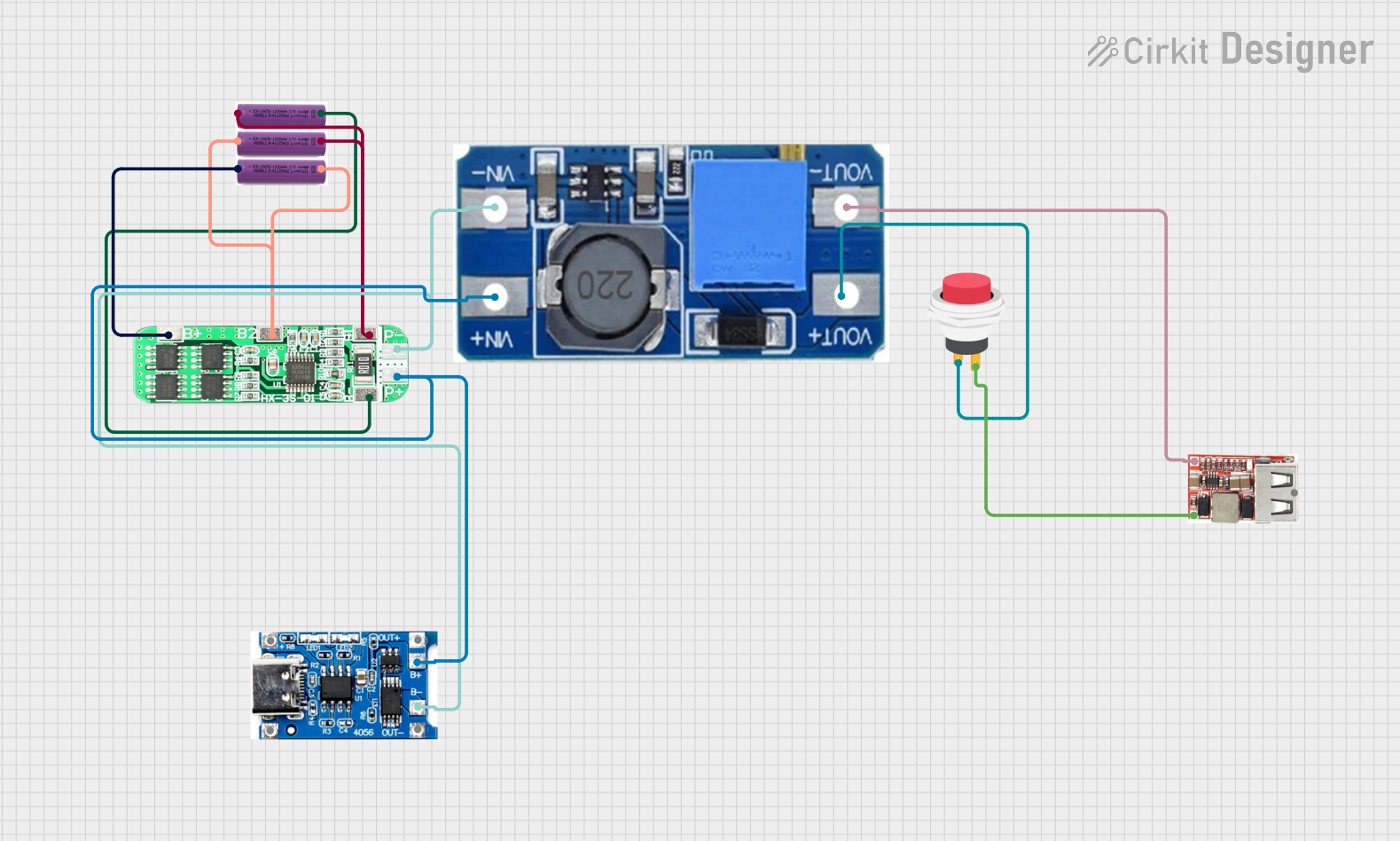
 Open Project in Cirkit Designer
Open Project in Cirkit Designer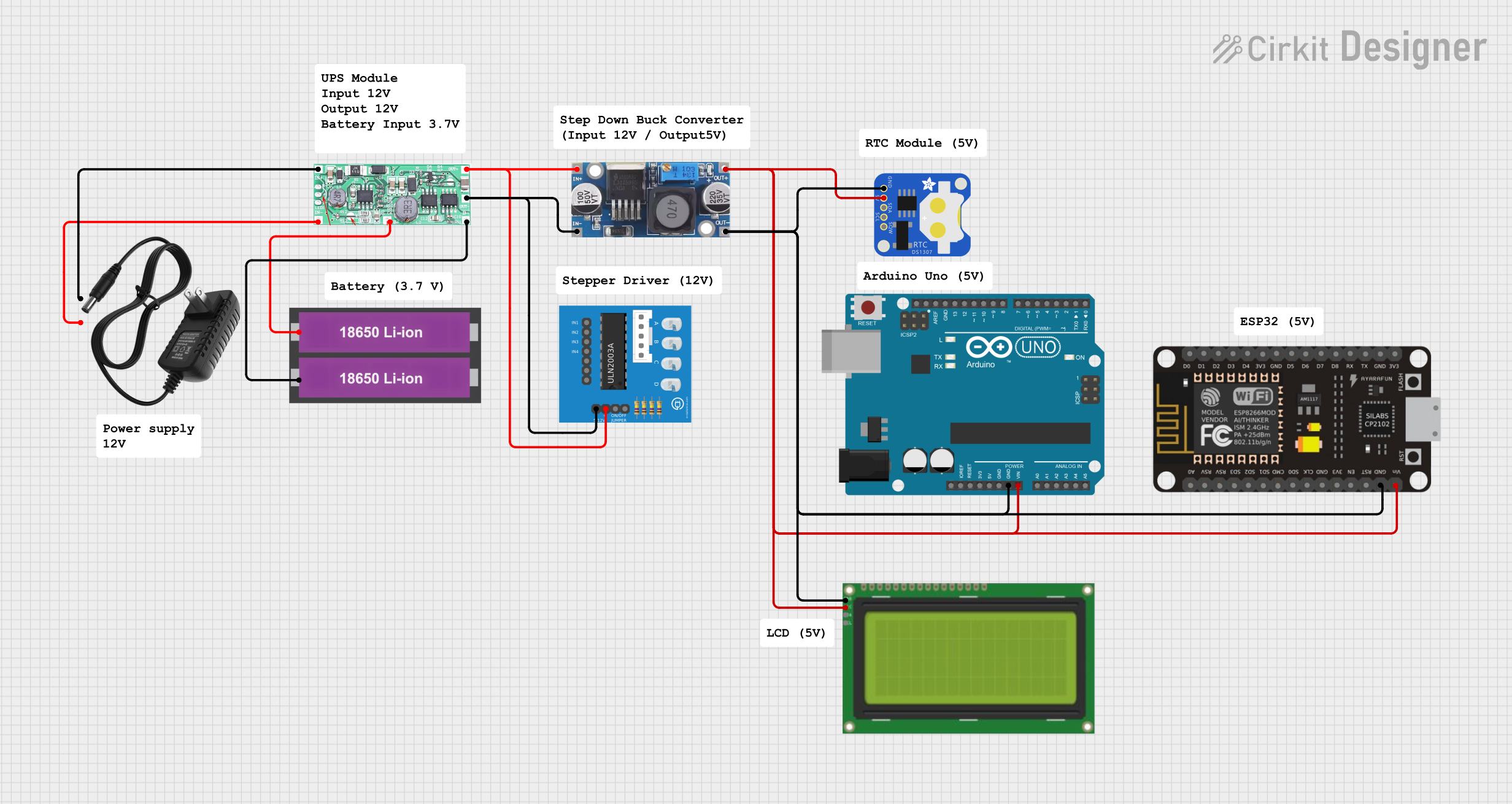
 Open Project in Cirkit Designer
Open Project in Cirkit Designer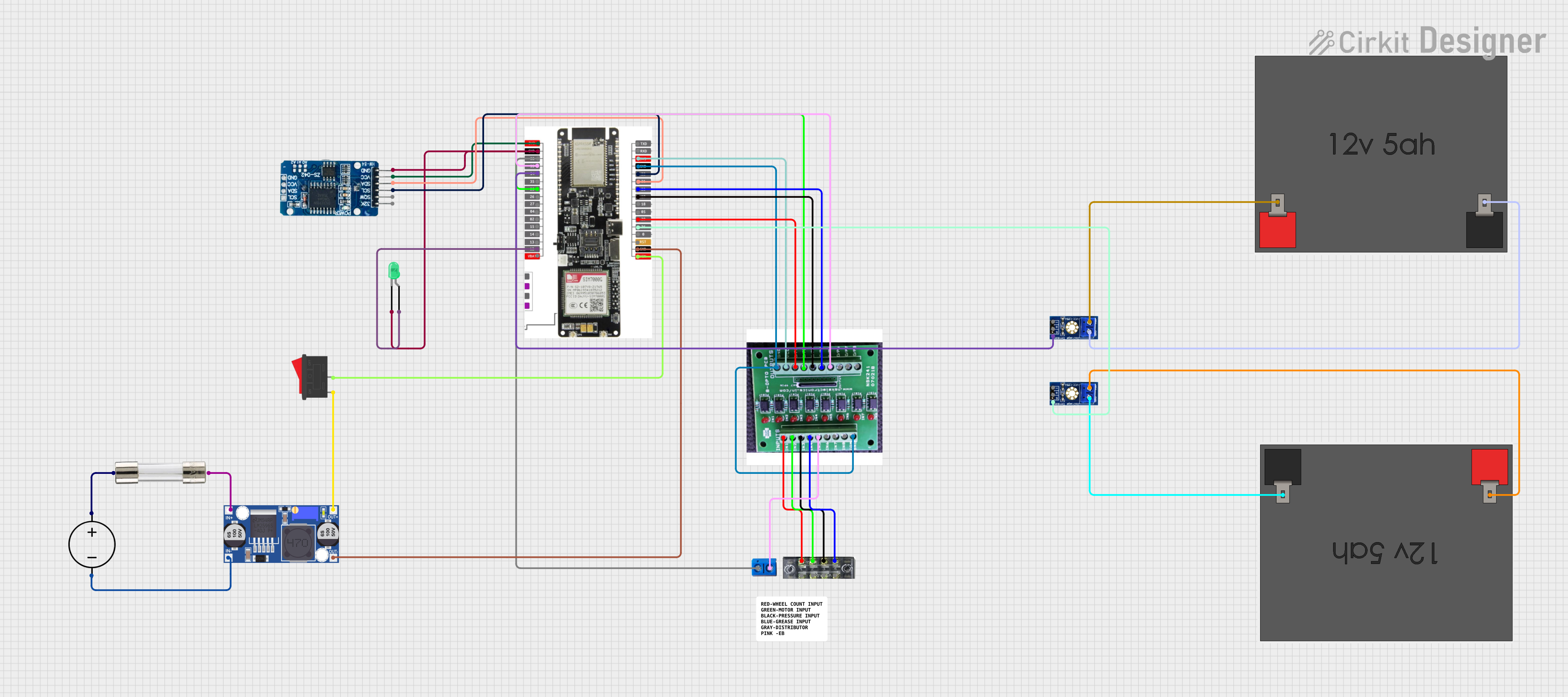
 Open Project in Cirkit Designer
Open Project in Cirkit DesignerExplore Projects Built with AMS1117-3.3V Module

 Open Project in Cirkit Designer
Open Project in Cirkit Designer
 Open Project in Cirkit Designer
Open Project in Cirkit Designer
 Open Project in Cirkit Designer
Open Project in Cirkit Designer
 Open Project in Cirkit Designer
Open Project in Cirkit DesignerCommon Applications and Use Cases
- Powering 3.3V microcontrollers (e.g., ESP8266, ESP32)
- Supplying stable voltage to sensors and modules
- Voltage regulation in DIY electronics projects
- Prototyping and breadboard circuits
Technical Specifications
The AMS1117-3.3V module is based on the AMS1117 linear voltage regulator IC. Below are its key technical details:
| Parameter | Value |
|---|---|
| Input Voltage Range | 4.5V to 12V |
| Output Voltage | 3.3V ± 1% |
| Maximum Output Current | 800mA |
| Dropout Voltage | 1.1V (at full load) |
| Quiescent Current | 5mA (typical) |
| Operating Temperature | -40°C to +125°C |
| Protection Features | Thermal shutdown, short-circuit protection |
Pin Configuration and Descriptions
The AMS1117-3.3V module typically has three pins:
| Pin | Name | Description |
|---|---|---|
| 1 | VIN | Input voltage (4.5V to 12V) |
| 2 | GND | Ground (common ground for input and output) |
| 3 | VOUT | Regulated 3.3V output |
Usage Instructions
How to Use the AMS1117-3.3V Module in a Circuit
Connect the Input Voltage (VIN):
- Provide a DC voltage between 4.5V and 12V to the VIN pin. Ensure the input voltage is at least 1.1V higher than the desired 3.3V output (i.e., minimum 4.4V input).
Connect the Ground (GND):
- Connect the GND pin to the ground of your circuit. This serves as the common reference point for both input and output.
Connect the Output Voltage (VOUT):
- Use the VOUT pin to power your 3.3V devices. Ensure the total current draw does not exceed 800mA.
Add Decoupling Capacitors (Recommended):
- Place a 10µF capacitor on the input (VIN to GND) and a 10µF capacitor on the output (VOUT to GND) to improve stability and reduce noise.
Important Considerations and Best Practices
- Heat Dissipation: The AMS1117 is a linear regulator, so excess input voltage is dissipated as heat. If the input voltage is significantly higher than 3.3V and the current draw is high, consider adding a heatsink or reducing the input voltage to minimize heat generation.
- Input Voltage Range: Do not exceed the maximum input voltage of 12V, as this can damage the module.
- Load Current: Ensure the total current drawn by connected devices does not exceed 800mA. For higher current requirements, consider using a switching regulator instead.
- Bypass Capacitors: Always use the recommended capacitors to ensure stable operation and prevent oscillations.
Example: Using AMS1117-3.3V with Arduino UNO
The AMS1117-3.3V module can be used to power 3.3V devices in conjunction with an Arduino UNO. Below is an example of how to connect the module to an ESP8266 Wi-Fi module:
Circuit Connections
- Connect the VIN pin of the AMS1117 module to the 5V output of the Arduino UNO.
- Connect the GND pin of the AMS1117 module to the GND of the Arduino UNO.
- Connect the VOUT pin of the AMS1117 module to the VCC pin of the ESP8266.
- Connect the GND pin of the ESP8266 to the GND of the AMS1117 module.
Sample Arduino Code
// Example code to communicate with an ESP8266 module powered by AMS1117-3.3V
#include <SoftwareSerial.h>
// Define RX and TX pins for SoftwareSerial
SoftwareSerial esp8266(2, 3); // RX = Pin 2, TX = Pin 3
void setup() {
// Initialize serial communication with the ESP8266
Serial.begin(9600); // Serial monitor
esp8266.begin(115200); // ESP8266 baud rate
// Send a test command to the ESP8266
esp8266.println("AT"); // Send AT command to check communication
}
void loop() {
// Check if the ESP8266 has sent any data
if (esp8266.available()) {
// Read and print data from the ESP8266
while (esp8266.available()) {
char c = esp8266.read();
Serial.print(c);
}
}
// Check if the user has sent any data from the Serial Monitor
if (Serial.available()) {
// Read and send data to the ESP8266
while (Serial.available()) {
char c = Serial.read();
esp8266.print(c);
}
}
}
Troubleshooting and FAQs
Common Issues and Solutions
No Output Voltage:
- Cause: Input voltage is too low or not connected properly.
- Solution: Ensure the input voltage is at least 4.5V and properly connected to the VIN pin.
Overheating:
- Cause: Excessive input voltage or high current draw.
- Solution: Reduce the input voltage or use a heatsink to dissipate heat.
Unstable Output Voltage:
- Cause: Missing or insufficient decoupling capacitors.
- Solution: Add a 10µF capacitor to both the input and output pins.
Module Not Working:
- Cause: Exceeded maximum input voltage or current rating.
- Solution: Verify that the input voltage is below 12V and the load current is under 800mA.
FAQs
Q: Can I use the AMS1117-3.3V module to power a 5V device?
A: No, the AMS1117-3.3V module is designed to output a fixed 3.3V. For 5V devices, use the AMS1117-5.0V module or a different regulator.
Q: Is the AMS1117-3.3V module suitable for battery-powered projects?
A: It depends. The AMS1117 is a linear regulator, which is less efficient than switching regulators. For battery-powered projects, consider using a DC-DC buck converter for better efficiency.
Q: Can I connect the AMS1117-3.3V module directly to a 12V power supply?
A: Yes, but ensure the current draw is low to prevent overheating. Use a heatsink if necessary.